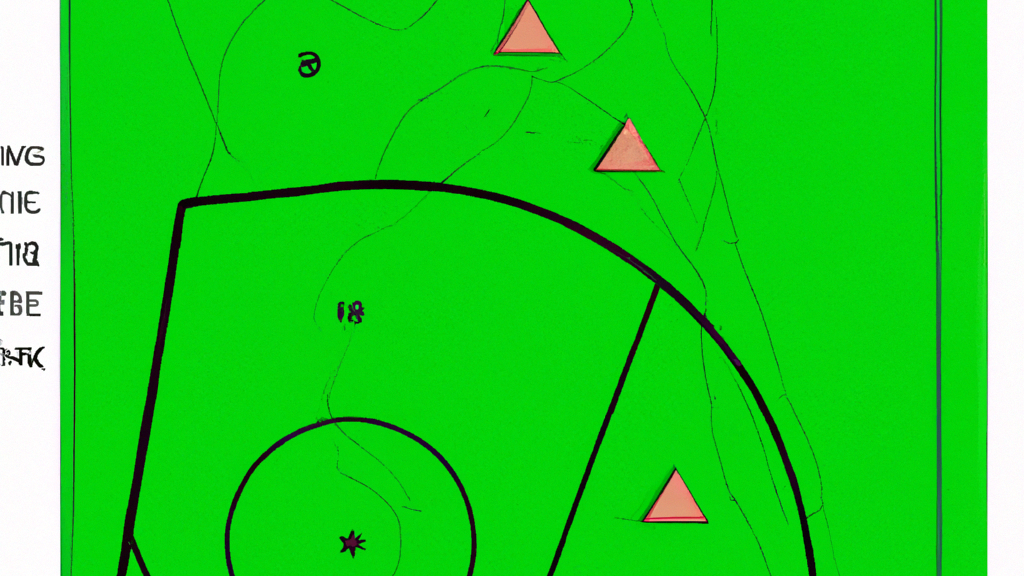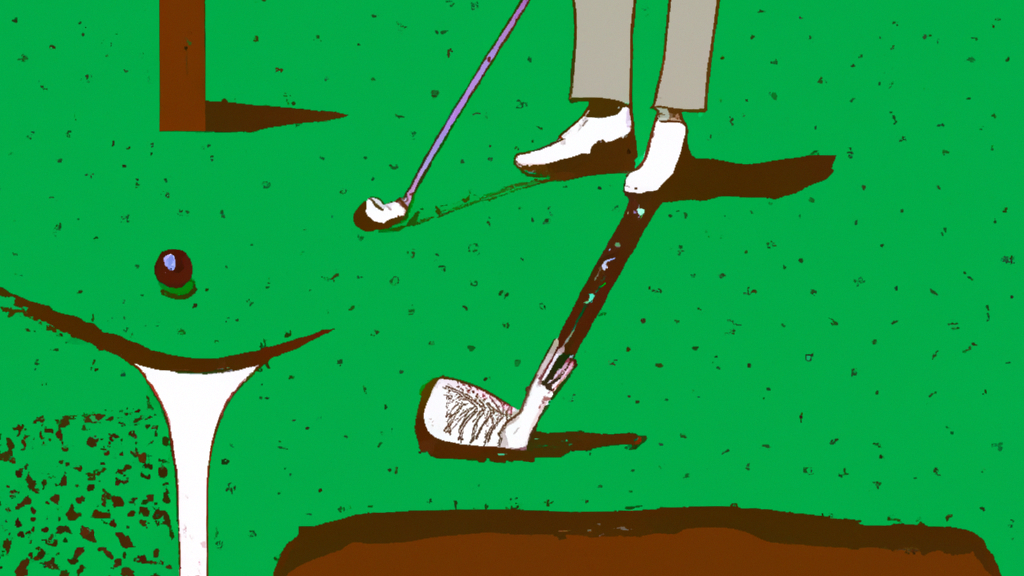GOLF COURSE MANAGEMENT: A GUIDE TO AESTHETIC MANAGEMENT
Golf courses are not just a place to play golf; they are also a place to relax, socialize, and enjoy the beauty of nature. Golf course management is an essential aspect of maintaining the aesthetic appeal of a golf course. A well-managed golf course not only enhances the playing experience but also attracts more golfers and increases revenue. In this blog post, we will explore the importance of aesthetic management in golf course management. We will discuss the various aspects of golf course management, including turf management, irrigation, landscaping, and maintenance.
Whether you are a golf course owner, manager, or golfer, this guide will provide you with valuable insights into how to maintain a beautiful and functional golf course. So, let’s dive in and discover the secrets of golf course management!

Golf Course Aesthetic Management: A Guide to Achieving It
Golf courses are not just a place to play golf, but they are also a place to relax and enjoy the beauty of nature. Golf course management is an essential aspect of maintaining the aesthetic appeal of the golf course. A well-managed golf course not only enhances the playing experience but also attracts more players and visitors. In this article, we will discuss the importance of aesthetic management in golf course management and provide a guide to achieving it.
Understanding the Importance of Natural Elements
Aesthetic management is the process of maintaining the visual appeal of the golf course. It involves the maintenance of the grass, trees, flowers, and other natural elements of the golf course. Aesthetic management is essential because it creates a pleasant and relaxing environment for golfers and visitors. It also enhances the overall experience of playing golf.
- Grass: The grass is the most critical element of the golf course. It is essential to maintain the grass at the right height and ensure that it is healthy. The grass should be mowed regularly, and the height should be adjusted according to the season. During the summer months, the grass should be kept longer to retain moisture, while in the winter months, it should be kept shorter to prevent snow mold.
- Trees: Another critical element of the golf course is the trees. Trees not only add to the beauty of the golf course but also provide shade and shelter for golfers. It is essential to maintain the trees by pruning them regularly and removing any dead or diseased branches. Trees should also be planted strategically to provide shade and shelter for golfers.
- Flowers and Plants: Flowers and other plants are also essential elements of the golf course. They add color and beauty to the golf course and create a pleasant environment for golfers and visitors. It is essential to plant flowers and other plants that are suitable for the climate and soil conditions of the golf course. They should also be watered and fertilized regularly to ensure that they remain healthy and vibrant.
Infrastructure and Water Resources
In addition to natural elements, aesthetic management also involves the maintenance of the golf course’s infrastructure. This includes the maintenance of the golf carts, the clubhouse, and other facilities. Golf carts should be cleaned and serviced regularly to ensure that they are in good condition. The clubhouse should also be maintained to provide a comfortable and welcoming environment for golfers and visitors.
Aesthetic management also involves the management of the golf course’s water resources. Water is essential for maintaining the grass, trees, and other natural elements of the golf course. It is essential to manage water resources efficiently to ensure that they are used effectively and sustainably. This includes the use of irrigation systems that are designed to deliver water efficiently and minimize waste.
Pest and Disease Management
One of the most critical aspects of aesthetic management is the management of pests and diseases. Pests and diseases can damage the grass, trees, and other natural elements of the golf course. It is essential to manage pests and diseases effectively to prevent damage and maintain the aesthetic appeal of the golf course. This includes the use of integrated pest management techniques that minimize the use of pesticides and other chemicals.
Sustainability and Environmentally Friendly Practices
Aesthetic management is not just about maintaining the visual appeal of the golf course. It is also about creating a sustainable and environmentally friendly golf course. This includes the use of sustainable practices such as the use of organic fertilizers and the planting of native plants. It also involves the management of waste and the use of renewable energy sources.
Conclusion
Aesthetic management is an essential aspect of golf course management. It involves the maintenance of the grass, trees, flowers, and other natural elements of the golf course. It also involves the management of the golf course’s infrastructure, water resources, pests, and diseases. Aesthetic management is not just about maintaining the visual appeal of the golf course but also about creating a sustainable and environmentally friendly golf course. By following the guide provided in this article, golf course managers can achieve aesthetic management and enhance the overall experience of playing golf.

- COLORADO GOLF INDUSTRY BEST MANAGEMENT PRACTICES …
practices; integrated pest management; pesticide … BMPs in order to guide golf courses in balanc- … aesthetic value and reduce operational costs. - Golf course maintenance and management guide
The course should also be sprayed with herbicides and pesticides as needed to keep pests away and maintain the property’s aesthetics. Courses should also … - GCSAA: Golf Course Superintendents Association of America
The Golf Course Superintendents Association of America (GCSAA) is an association for professionals who manage and maintain golf courses. Explore online. - Turfgrass Fertilization: A Basic Guide for Professional Turfgrass …
Nov 10, 2016 … Jones, “Turf Analysis,” Golf Course Management, 48, no. 1 (1980): 29-32; H. Marschner, Mineral Nutrition of Higher Plants (New York: Academic … - Mastering The Business of Golf Course Agronomics [Career Guide …
Sep 27, 2021 … If you’re considering a career in turfgrass management, here is one of the top in the business from whom to learn. Turfgrass Science As A Career. - The Golf Course Restaurant Guide | Lightspeed
Pay special attention to what your restaurant’s name, aesthetic, menu items, service level, and pricing say … Golf course restaurant inventory management. - Golf course condition and playability beyond the greens – Brown …
Apr 26, 2021 … Abstract Golf course standards are an important element to enable effective performance-based management, which can optimise resource … - The Ultimate Start of Golf Season Guide for Golf Courses – Lightspeed
Mar 15, 2023 … 4. Tee sheet, POS and your online booking system. Whether you’ve already switched to some type of golf management software, you’re seriously … - A review of precision management for golf course turfgrass – Carlson …
Aug 21, 2022 … The adoption of PTM can allow golf course superintendents to maintain playability and aesthetic goals of golf and increase the efficiency of … - SOLitude Lake Management: Lake & Pond Management Services
We offer pondweed & algae control, water quality testing, erosion repair, … our experts partner with communities, golf courses, municipalities, …
Interesting tidbits about Golf Course Management: A Guide to Aesthetic Management
- The first recorded game of golf was played in Scotland in the 15th century.
- Golf is one of only two sports to have been played on the moon (the other being javelin).
- The longest hole in professional golf is the 7th hole at Satsuki Golf Club in Japan, measuring a whopping 909 yards.
- Augusta National Golf Club, home of The Masters tournament, was originally an indigo plantation before it became a golf course.
- In some countries such as China and North Korea, playing golf used to be illegal due to its association with Western culture and elitism.
- Professional golfer Tiger Woods has won more than $120 million dollars throughout his career from prize money alone.
- Caddies were originally hired by wealthy players who needed someone to carry their clubs and provide advice during games; now they are often employed by all levels of players for their expertise on courses and strategy tips.





